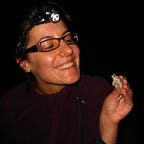Habitat Connectivity 101: How Corridors Support Species Conservation
Habitat restoration as a stepping-stone to maintain viable populations
Is the image above familiar to you? How do you perceive encountering animals on roads, on your walks, near urban or suburban areas? Have you ever thought that your home may be too close to theirs? Or if our infrastructures are crossing their habitat? Close encounters with wildlife happen for several reasons — including attraction to human food or shelter — but mostly is because we are within the animal home range.
Home ranges are areas where animals live and perform daily movements. These areas support their life cycle and provide the necessary resources for survival. Understanding why we encounter animals near our settlements or infrastructures can redirect our attention to the root cause of this behaviour. Nevertheless, the other side of this story is that the more we invade their habitat, the more we try to reverse this tendency by creating and restoring green areas.
This is the first article from a series dedicated to habitat connectivity. I want to provide information on different aspects of corridor implementation. Also, I want to give critical insight into why is necessary to restore the remaining landscape and transform our relationship with habitat…
